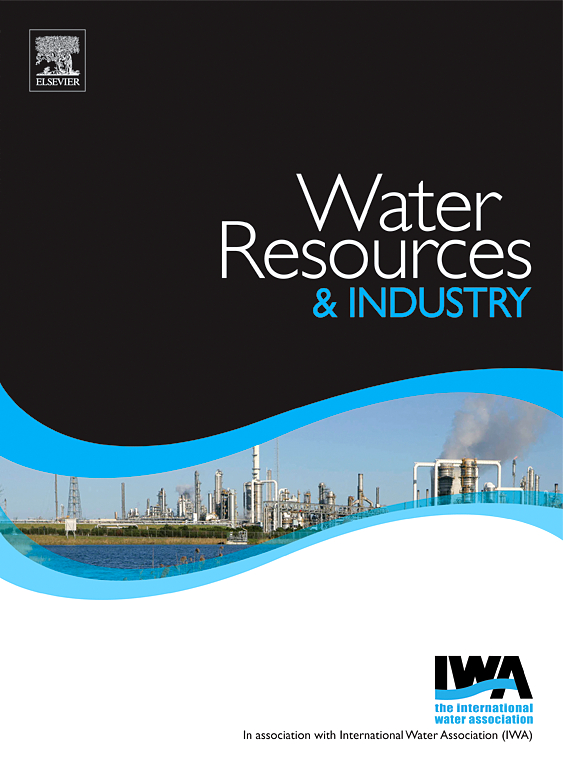Study on the spatial spillover effect of reclaimed water utilization efficiency in water environment-sensitive areas with heterogeneous technology
IF 7.5
3区 工程技术
Q1 WATER RESOURCES
引用次数: 0
Abstract
As a key path to alleviate the double pressure of economic and social development and ecological environment protection in water-sensitive areas, reclaimed water is of great significance to coordinately promote carbon reduction, pollution reduction, green expansion and growth. This paper uses the three-stage Slack-Based Measure (SBM) model to measure the efficiency of recycled water utilization in 41 cities in the Yangtze River Delta, and based on the characteristics of technological heterogeneity, systematically exploring the spatial correlation mechanism of recycled water utilization. The results show that: firstly, after excluding external environmental factors and random factors, the utilization efficiency of reclaimed water in different cities decreased significantly compared with before improvement. The utilization efficiency of recycled water in each city has dropped significantly compared with that before excluding external environmental factors and random factors. Secondly, government policy incentive is the key factor to improve the efficiency of reclaimed water utilization, and the leading role of science and technology innovation is limited to the cluster frontier in the low innovation level area. Thirdly, from the perspective of spatial spillover effect, the resident population significantly improved the efficiency of reclaimed water utilization in the region while suppressing the efficiency value of surrounding areas; the construction of water supply and drainage infrastructure inhibits the efficiency of reclaimed water utilization in all regions. Therefore, local governments should guide the use of reclaimed water through policy formulation and attach importance to technological innovation oriented by environmental protection. Optimize the construction of reclaimed water infrastructure based on the relationship between supply and demand, and improve the efficiency of reclaimed water utilization, so as to achieve the harmonious development of man and nature.

基于异质技术的水环境敏感区中水利用效率空间溢出效应研究
中水作为缓解水敏感地区经济社会发展和生态环境保护双重压力的关键路径,对协调推进碳减排、污染减排、绿色扩张与增长具有重要意义。采用三阶段Slack-Based测度(SBM)模型对长三角41个城市中水利用效率进行测度,基于技术异质性特征,系统探讨中水利用的空间关联机制。结果表明:第一,在排除外部环境因素和随机因素后,各城市中水利用效率较改善前显著下降。各城市循环水利用效率与排除外部环境因素和随机因素前相比有明显下降。其次,政府政策激励是提高中水利用效率的关键因素,科技创新的引领作用仅限于低创新水平地区的集群前沿。③从空间溢出效应来看,常住人口显著提高了区域中水利用效率值,同时抑制了周边区域的效率值;各地区给排水基础设施建设制约了中水利用效率。因此,地方政府应通过政策制定引导再生水的利用,重视以环保为导向的技术创新。根据供需关系优化中水基础设施建设,提高中水利用效率,实现人与自然的和谐发展。
本文章由计算机程序翻译,如有差异,请以英文原文为准。
求助全文
约1分钟内获得全文
求助全文
来源期刊

Water Resources and Industry
Social Sciences-Geography, Planning and Development
CiteScore
8.10
自引率
5.90%
发文量
23
审稿时长
75 days
期刊介绍:
Water Resources and Industry moves research to innovation by focusing on the role industry plays in the exploitation, management and treatment of water resources. Different industries use radically different water resources in their production processes, while they produce, treat and dispose a wide variety of wastewater qualities. Depending on the geographical location of the facilities, the impact on the local resources will vary, pre-empting the applicability of one single approach. The aims and scope of the journal include: -Industrial water footprint assessment - an evaluation of tools and methodologies -What constitutes good corporate governance and policy and how to evaluate water-related risk -What constitutes good stakeholder collaboration and engagement -New technologies enabling companies to better manage water resources -Integration of water and energy and of water treatment and production processes in industry
 求助内容:
求助内容: 应助结果提醒方式:
应助结果提醒方式:


